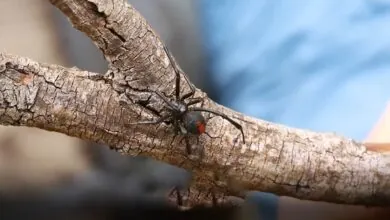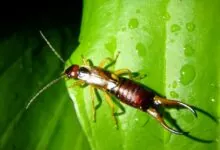Venom at Your Feet: Unmasking the Truth about Scorpion Sting

Ever faced off against a warrior fortified with a venomous spear, all loaded into a sleek, eight-legged package? That’s the reality of a scorpion confrontation, where a flick of their barbed tail can turn a sunlit stroll into a nerve-wracking dance. But before you reach for the bug spray to avoid a scorpion sting, hold on – there’re other striking secrets worth-highlighting pertaining to their distinctive realm.
| Kingdom | Phylum | Class | Order | Family | Scientific Name | |
| Animalia | Arthropoda | Arachnida | Scorpiones | Scorpionoidea | Scorpiones |
Scorpion Sting

Notwithstanding the fact that the scorpion sting rarely proves fatal, comprehending this prickly encounter is pivotal.
Scorpion Venom
Just envision a miniature harpoon tipped with a cocktail of toxins. That’s certainly the scorpion’s stinger – located at the tail tip. Its modified telson, encompassing venom glands and a needle-like structure named the chelicera, accountable for injecting the venom.
But this venom is not a uniform concoction; it’s an intricate blend of neurotoxins, peptides and enzymes, with each species having its own unparalleled mix. Some, like the bark scorpion, specialize in affecting the nervous system, leading to excruciating pain and muscle spasms. Others, such as the deathstalker, locks on the cardiovascular and respiratory systems.
Scorpion Sting Symptoms
Not all face offs with scorpions lead to a sting! They’re typically more cautious than aggressive, prioritizing to flee than fight. Nonetheless, they might unleash their stinger if threatened.
The immediate repercussions of a scorpion sting is oftentimes localized pain, swelling and redness at the site. It can feel like a bee sting, though potentially much more severe. Yet the full spectrum of symptoms is contingent on the venom’s composition and the individual’s response.
In mild cases, symptoms might be confined to the local area and resolve within a few hours. Conversely, severe stings can result in a cascade of effects, including neurological, cardiovascular, respiratory and allergic.
Diagnosis and Treatment
Speaking of scorpion sting diagnosis, it could be tricky to identify a scorpion sting, exclusively if the culprit scurries away unobserved. Notwithstanding, the blend of localized pain, swelling and potential systemic symptoms normally raises suspicion.
Concerning the scorpion sting treatment, it rests on the severity. In mild cases, you can immobilize the affected limb, apply a cold compress to reduce swelling and pain, elevate the stung area and monitor for worsening symptoms and seek medical attention if needed.
However, in severe cases, immediate medical attention is essential. Particular antivenin might be administered to neutralize the venom’s impacts. Medications, such as painkillers, muscle relaxants and anti-anxiety drugs can manage symptoms. For more insights about scorpions and how to manage encounters on the Centers for Disease Control and Prevention (CDC).
Origin and Evolution
Evolutionary History
In conjunction with the scorpion origin, they’ve a lineage that spans back a striking 435 million years, predating even the dinosaurs. As per fossil evidence, they arose from eurypterids – aquatic scorpions identical to giant horseshoe crabs. Concerning the scorpion evolution, these creatures little by little adapted to terrestrial life, obtaining their emblematic pincers, segmented tails and of course, venomous stinger.
With respect to the scorpion adaptations, notable features include the evolution of powerful mouthparts called chelicerae, replacing gills with book lungs and the development of the prehensile tail and venomous sting – yes, the notorious scorpion sting!
Genetic Composition and Diversity
Scorpions, with over 2,500 identified species, showcase astonishing genetic diversity. As per research, their DNA harbors unparalleled adaptations, such as genes encoding potent toxins and proteins assisting in desert survival.
Environmental Adaptations
Scorpions have conquered diverse habitats from scorching deserts to lush rainforests. For example, desert species boast elongated legs for swift sand movement, while rainforest dwellers have flattened bodies for navigating tight spaces. Scorpion adaptations extend over and above morphology, with variations in venom composition.
Distribution and Population
Geographic Range
Don’t confine the scorpion distribution to just desert dwellers; they occupy a strikingly diverse global range, located in all continents except Antarctica. Their contemporary distribution stretches from North America to South Africa, covering deserts, savannas, grasslands and rainforests.
Population Dynamics
Speaking of the scorpion population, it’s a tricky task, but researchers have spotlighted hotspots of abundance. Dense scorpion populations can reach over 1,000 individuals per hectare in specific habitats. For scorpions, population dynamics are swayed by numerous factors, including habitat suitability, predation, cannibalism and reproductive strategies.
Geography
| Continent(s) | All except Antarctica |
| Countries | Found in over 100 countries |
| Bio-geographical Realms | Neotropical, Nearctic, Palearctic, Afrotropical, Indo-Malayan, Australasian |
| Biome | Desert, grassland, savanna, forest, mountains, caves, intertidal zones |
| Climate Zones | Subtropical, tropical, temperate, some arid zones |
Scorpion Types
Let’s have a glance at the most famous types of scorpion, each master of its kingdom.
Emperor Scorpion (Pandinus imperator)
Emperor scorpion, found in West Africa, is among the largest scorpions in the world, reaching up to 8 inches long. They feature black or dark brown coat, with long, slender legs and claws.
Deathstalker (Leiurus quinquestriatus)
You can locate the deathstalker in North Africa and Middle East. What makes them distinctive is their yellowish-brown to reddish-brown coat, with thick legs and claws.
Arizona Bark Scorpion (Centruroides sculpturatus)
Found in Southwestern United States and northwestern Mexico, the Arizona bark scorpion showcases pale yellow to reddish-brown coat, with a slender body and tail.
Asian Forest Scorpion (Heterometrus spinifer)
Asian forest scorpion, located in Southeast Asia, is known for its black or dark brown color, with long, slender legs, claws and a venomous sting that can result in intense pain.
Striped Emperor Scorpion (Heterometrus longimanus)
Located in Southeast Asia, the striped emperor scorpion boast black or dark brown coat and possesses a distinctive yellow stripe running down the back of its body.
Habitat
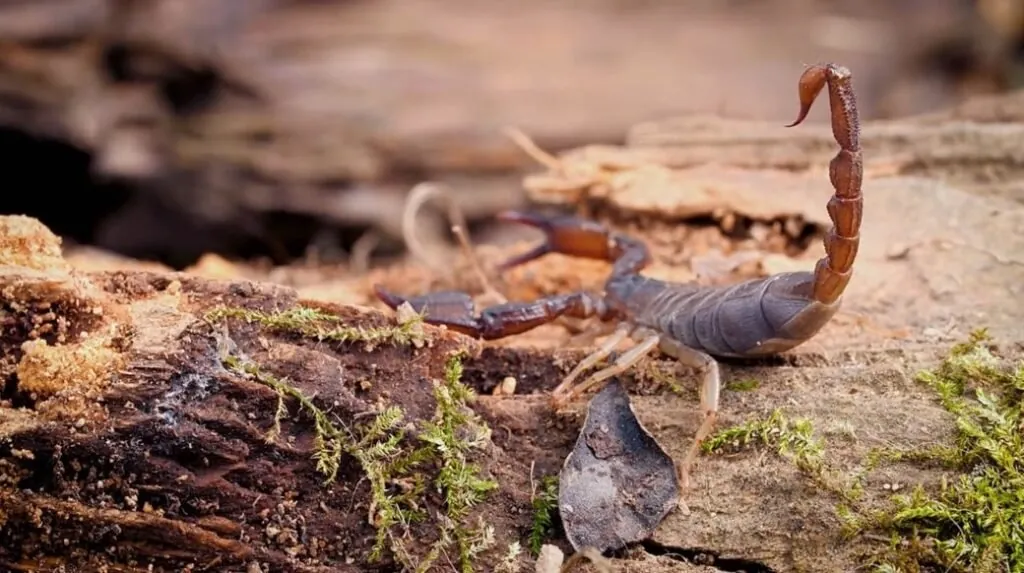
The striking scorpion sting may steal the spotlight, but their habitat holds equally fascinating secrets.
Habitat Preferences
When it comes to the scorpion habitat, they’re amazingly adaptable and occur in a stretched range of ecosystems than many people realize. Albeit typically interlinked with deserts (60% of species), they’re also found in temperate forests (15% of species), tropical forests (10% of species) and savannas and grasslands (5% of species).
Over and above their preferred ecosystems, particular microhabitats offer pivotal resources and protection, including burrows, crevices, leaf litter and vegetation.
Habitat Utilization Patterns
Some scorpion species feature seasonal shifts in habitat use, including desert scorpions and forest scorpions. A majority of scorpions are nocturnal, making use of cooler night temperatures for hunting and avoiding predation. Nevertheless, some species can be active in the course of the day, particularly in shaded or humid environments.
5 Scorpion Facts
Appearance

Above and beyond the enchanting the scorpion sting, the secrets of their appearance beckon further exploration.
Physical Characteristics
When it comes to the scorpion appearance, their markings can’t be overlooked! Some species sport fascinating patterns or stripes, while others have smooth carapaces.
Sexual Dimorphism
In the majority of species, male scorpions have longer metasoma (tails) and narrower bodies than females. While some species feature larger chelicerae in males. Males might glow more brightly than females in some fluorescent species.
Anatomy
| Color(s) | Varies widely: yellow, brown, black, reddish, greenish, translucent, or a combination |
| Claws | Two large pincers (pedipalps) for grasping prey and defense |
| Mouth | Small, located under the head, surrounded by chelicerae |
| Jaw | Jaw-like structures called chelicerae for cutting and crushing food |
| Feet | Four pairs of legs for walking and climbing |
| Skeleton | Exoskeleton (outer skeleton) made of chitin, providing protection and support |
The scorpion and earwig, despite their distinct appearances, share a mutual feature in their use of formidable pincers, employed for defense and predation.
Reproduction and Life Cycles
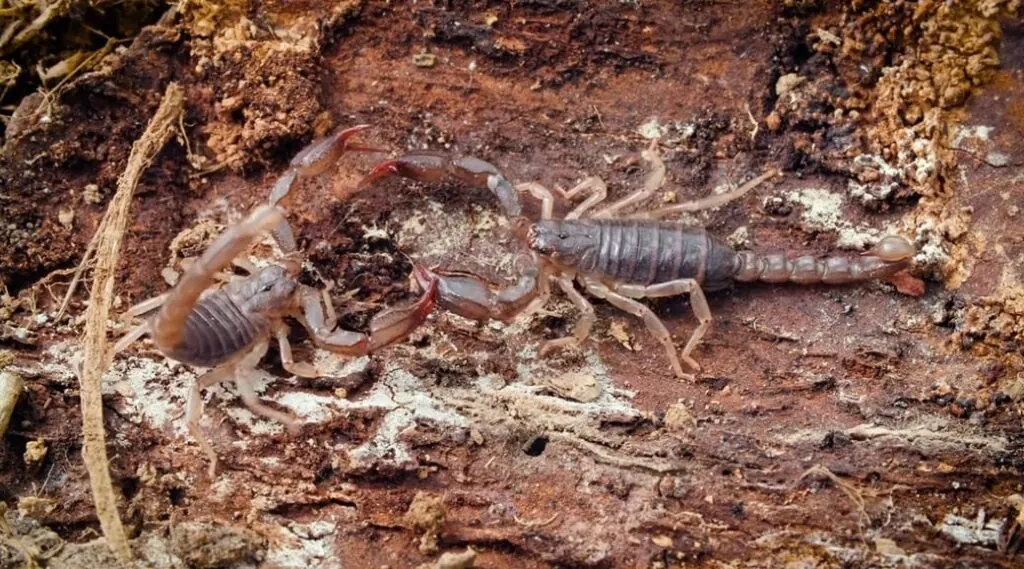
Mating System
The scorpion mating system varies pertaining to their species; for example, Emperor scorpions are poster children for scorpion monogamy. The Arizona bark scorpion takes a different approach – polygynous, whereby males are notorious heartbreakers, mating with multiple females over the span of the season.
On top of that, the striped-tail scorpion, being polyandrous powerhouse flips the script, with females hold the reins, mating with numerous males to ensure genetic diversity for their offspring.
Reproductive Biology
As for as the scorpion reproduction is concerned, most scorpions breed in spring or fall, provoked by environmental cues like temperature and light. The deathstalker scorpion throws epic breeding parties in the fall.
Dissimilar to their fearsome reputation – the scorpion sting, many scorpion mothers are devoted caregivers; for example, the giant forest scorpion carries her young on her back for months.
Gestation Period
The scorpion gestation period is astonishingly stretched, ranging from 2 to 3 months to a whopping 11 months in the emperor scorpion!
Life Cycle Stages
In conjunction with the scorpion life cycle stages, nymphs appear from their mothers resembling miniature versions of adults. After several molts, they little by little shed their exoskeletons and grow in size, obtaining signature pincers and venomous tails. For instance, the desert hairy scorpion experience 7 to 8 molts before touching maturity, taking around 5 to 7 years to become the formidable predators we know.
Reaching sexual maturity is relatively a slow process; for example, the emperor scorpion, takes a whopping 12 years to become ready for love!
Mating Habits
| Mating Behavior | Complex courtship ritual involving “promenade à deux” dance and spermatophore deposit |
| Reproduction Season | Varies with species, often spring/summer in temperate regions and rainy season in tropics |
| Litter Size | Varies from 20 to 50 depending on species |
| Gestation Period | 6-12 months |
| Baby Carrying | Young cling to their mother’s back after birth |
| Independent Age | After their first molt (shedding of exoskeleton), typically within a few weeks |
| Baby Name | Nymph or scorpling |
Diet and Lifestyle
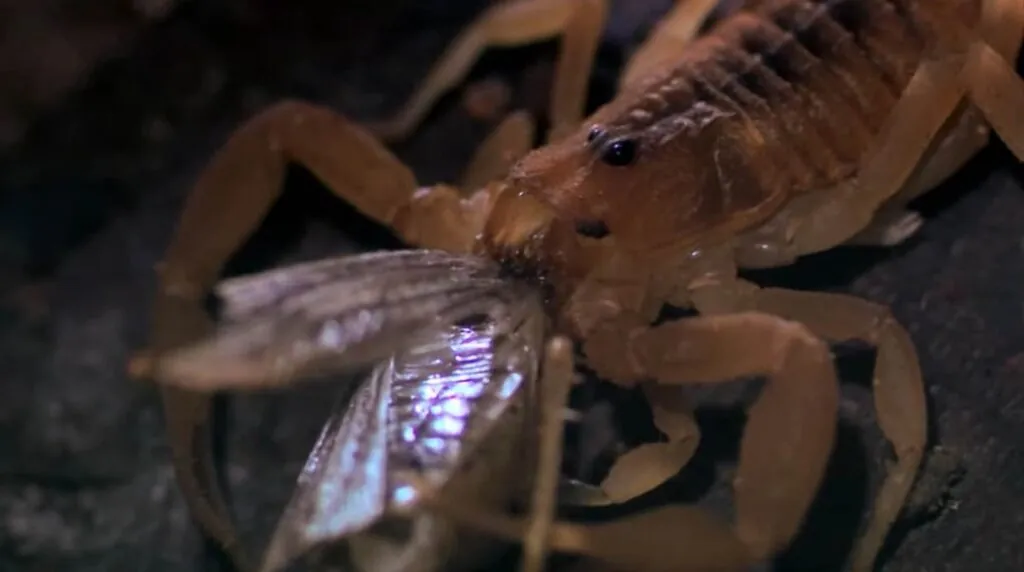
Feeding Ecology
Concerning the scorpion diet, these creatures are strict carnivores, serving as secondary consumers in their ecosystems. They rest on hunting and consuming other animals for survival. Their prey preferences varies widely built upon species and habitat; common victims include insects, arachnids and small vertebrates.
There’re some species that feature specialized diets; for instance, the Australian spiral burrow scorpion peculiarly targets burrowing spiders, while the deathstalker scorpion actively hunts small mammals.
Foraging Strategies
Most scorpions are sit-and-wait predators, utilizing burrows, crevices or leaf litter as concealed hunting grounds. A few species, like the striped-tail scorpion adopt a more proactive approach; they vigorously locate prey in their habitats.
Social Structure
The majority of scorpions leads solitary lives, solely interacting with each other during mating season. A few species, such as the emperor scorpion, exhibit a striking level of social behavior. The construct monogamous pairs that share burrows.
Threats and Conservation
Despite the alluring nature of scorpion sting stealing the show, their conservation remains a treasure trove of equally fascinating secrets.
Conservation Status
The scorpion conservation status fluctuates based on the species. Regrettably, many face significant threats, with over 30% recorded on the IUCN Red List as Vulnerable, Endangered or Critically Endangered.
The adorable Brazilian scorpion suffers from habitat destruction and illegal collection for the pet trade. Isometrus deharvengi – endemic to a tiny island in Vietnam – is threatened by invasive pests and habitat loss. Besides, Chiromachus ochropus, located in fragmented forest patches in Madagascar, is vulnerable to deforestation.
Those encountering a very high danger of extinction in the wild include Hadogenes troglodytes (South African scorpion), Scorpio maurus (North African scorpion) and Heterometrus longimanus (Asian forest scorpion).
On top of that, some species are facing a high risk of extinction in the wild – vulnerable, including the emperor scorpion, North African deathstalker and Arizona bark scorpion.
Primary Threats
In terms of the scorpion threats, they’re experiencing habitat loss, over collection, climate change, pollution and invasive species.
Relationship with Humans

Cultural Significance and Symbolism
Media and Entertainment
Economic Importance
In some cultures, these remarkable creatures are a prized culinary delicacy. They’re consumed in parts of China, Thailand, Vietnam and Mexico deep-fried, boiled and roasted.
In the development of new drugs, scorpion venom holds immense potential. The global market for scorpion venom is approximated to reach $45 million by 2027. In addition, more than 60 species are used in traditional medicine practices worldwide. Research is ongoing for applications in pain management, anti-microbial compounds and cancer therapy.
Unique Characteristics
Forge a path through an intriguing journey as we unfold fascinating facts about scorpions – truly captivating animals that start with S. Join us in shedding light on their remarkable rundown!
| Common Name | Scorpion |
| Other Name(s) | Sting scorpion, wind scorpion, whip scorpion (depending on species) |
| Number of Species | Over 2,500 known species |
| Lifespan | Varies by species, ranging from 2-6 years to 15 years for some desert species |
| Weight | 0.2 ounces (5 grams) to 8 ounces (227 grams) |
| Length | 2 inches (5 cm) to 8 inches (20 cm) |
| Top Speed | Up to 10 mph (16 km/h) in short bursts |
| Predator | Lizards, owls, snakes, mammals, other scorpions |
| Prey | Insects, spiders, small reptiles, rodents |
| Most Distinctive Feature | Venomous tail tipped with a stinger used for hunting and defense |
FAQs


